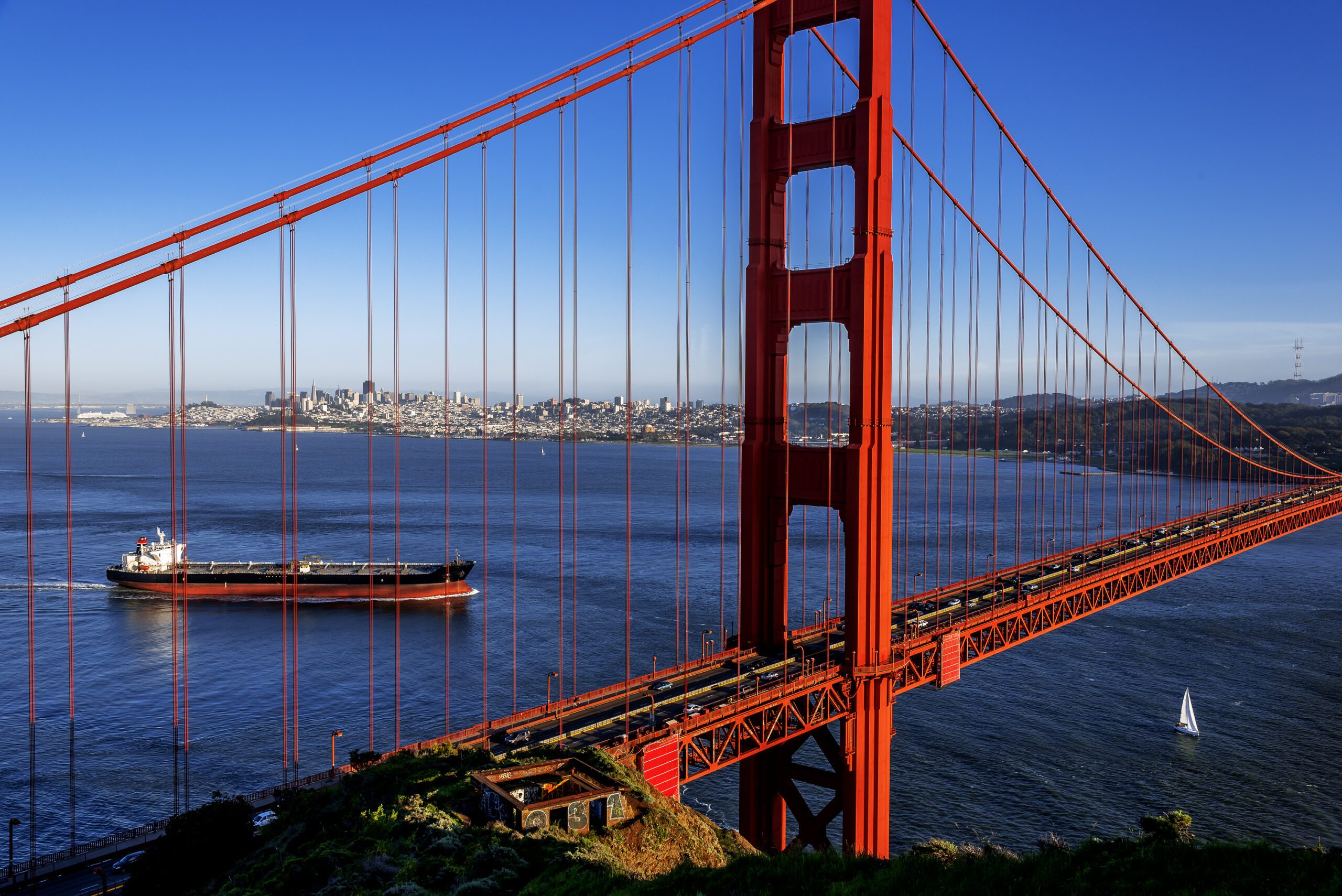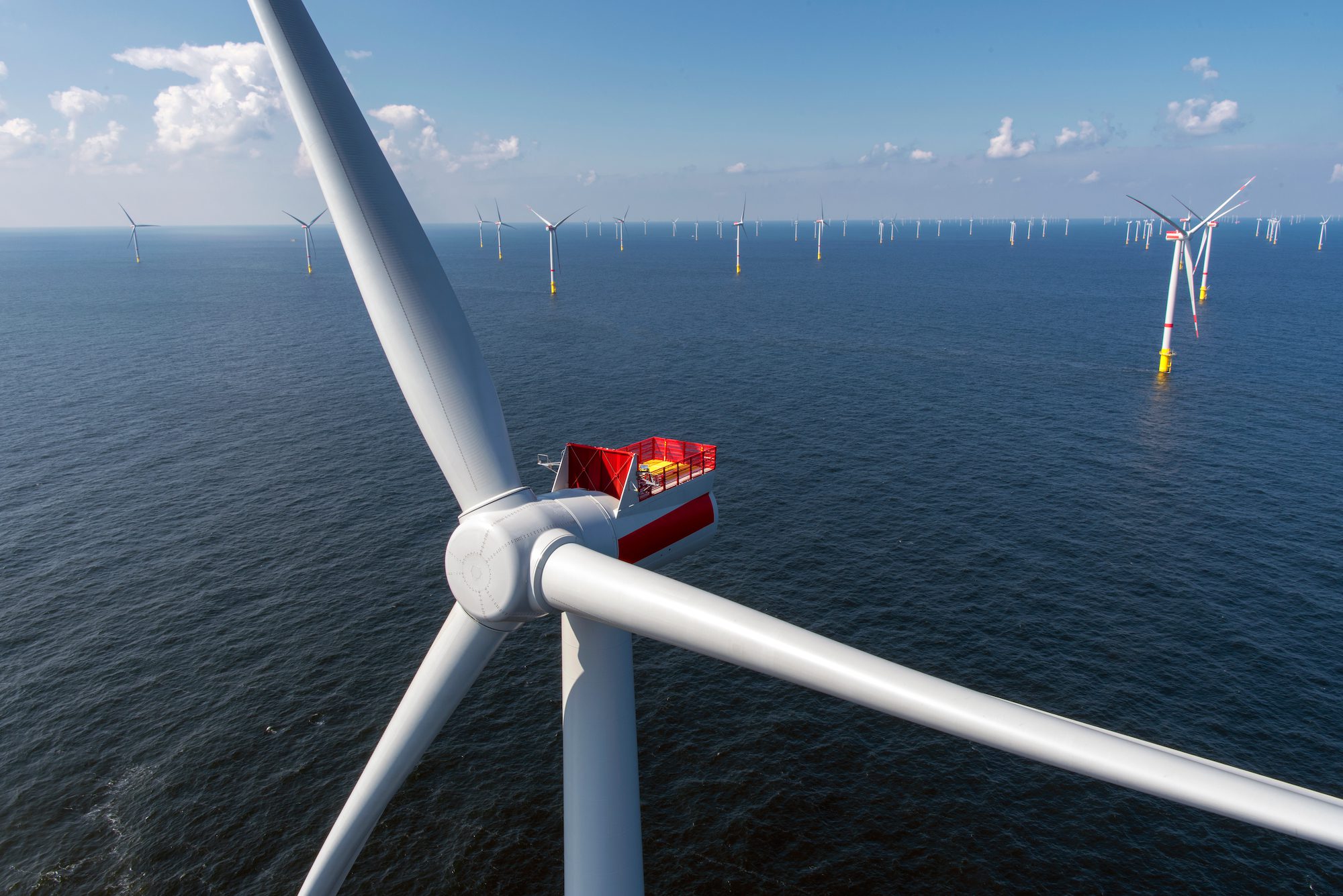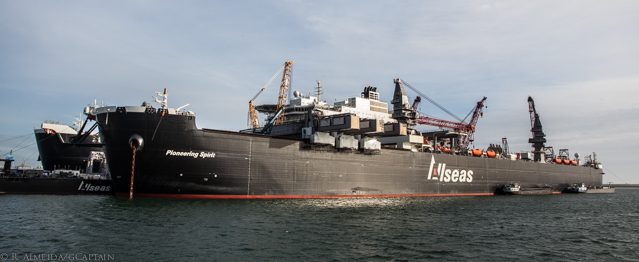
After literally years of hype, Allseas’ Pioneering Spirit (formerly Pieter Schelte) did not disappoint yesterday when I had the opportunity to see her up close in the Port of Rotterdam in The Netherlands.
She is currently the biggest ship in the world by physical dimensions, a record that will likely stand for quite a while considering she was built to the maximum width of the drydock in South Korea’s Daewoo Shipbuilding and Marine Engineering (DSME).
The vessel measures 382 meters long by 124 meters wide and was purpose-designed and built to decommission offshore oil and gas platforms quickly and efficiently using two primary operations.
Initially, the vessel will approach the platform and straddle it with its bow. Giant heave-compensated hydraulic levers, engineered by Bosch, will then grab the platform’s topsides, cut the supporting legs, and lift the entire topsides from the steel jacket in a single lift.
The vessel will then turn around and grab a hold of the jacket and lift it off the seafloor and place it on it’s stern deck.
At least, that’s the plan according to Allseas. The vessel is still being outfitted on the outskirts of the Port of Rotterdam and has yet to start working.
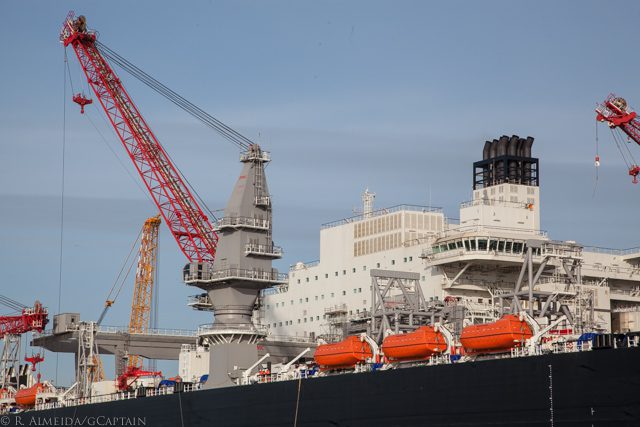
One of four, 600-ton rated deck cranes provides a bit of perspective on how large this vessel is.
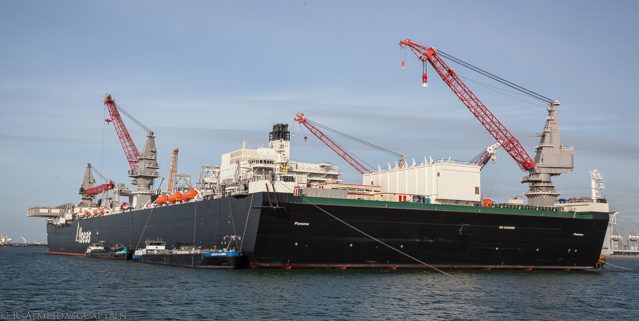
The Pioneering Spirit is incredibly beamy.
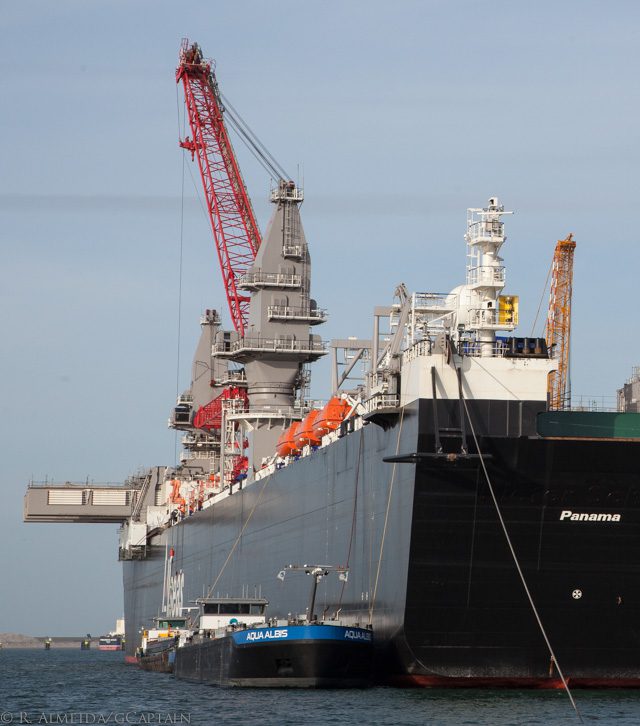
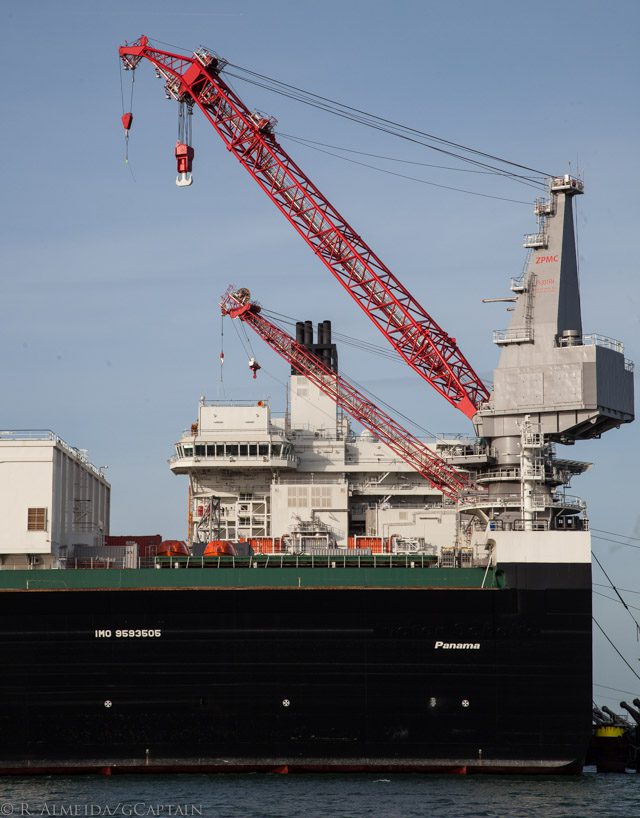
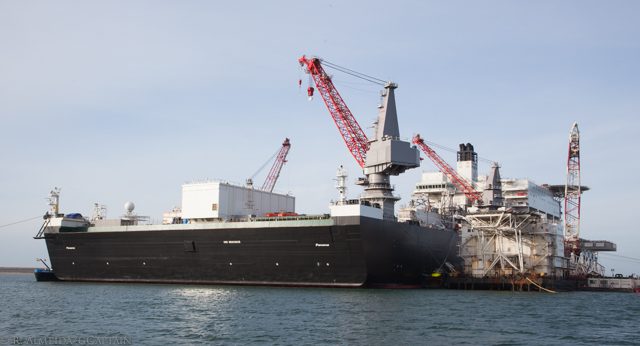
The Pioneering Spirit was of course amazing to see, however what was perhaps even more impressive is the Port of Rotterdam itself.
Stretching for about 30 miles from the center of town westward to the North Sea is an unbroken expanse of industrial facilities which collectively make Rotterdam the busiest port in Europe, by far.
In between miles upon miles of tank facilities for every different type of crude oil and refined product there are modern wind mills reminding us of the huge efforts that are being made toward the use of renewable energy sources.
These tank farms soon give way to dry bulk facilities until as we approach the outer reaches of Rotterdam, dozens, if not hundreds of container cranes support the movement of goods via the world’s largest containerships.
Nearly all of this infrastructure was built on reclaimed land, dredged up from the seafloor by Dutch companies who have established themselves over the years as undisputed leaders in their sector.
The following are some of my images from the western reaches of Rotterdam:
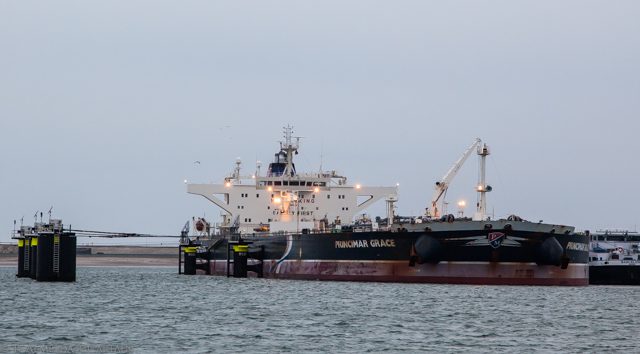
Above: Principal Maritime’s suezmax tanker Princimar Grace at anchor
Below: Bonn & Mees’ 1500 ton crane barge Matador 3 at work
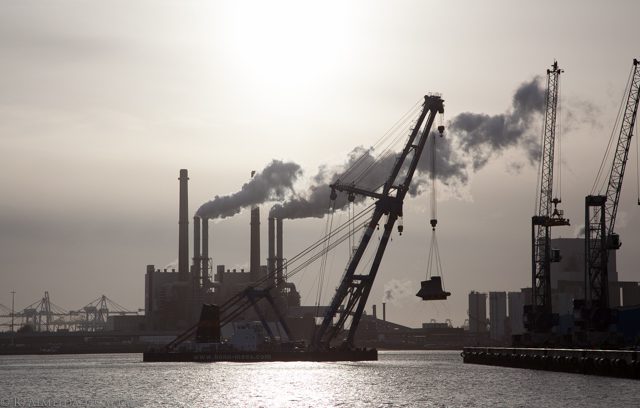
Containership MSC Arjshir

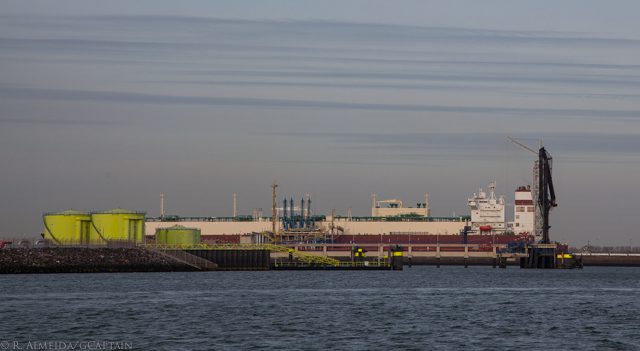
Above: A Q-Max LNG carrier owned by Qatar Gas subsidiary Nakilat unloads product
Below: Rotterdam’s LNG terminal
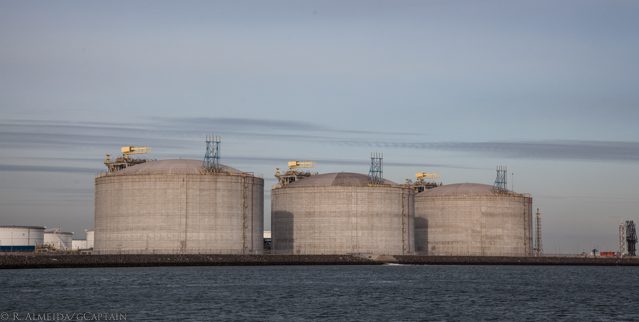
The harbor tug SD Stingray owned by Kotug
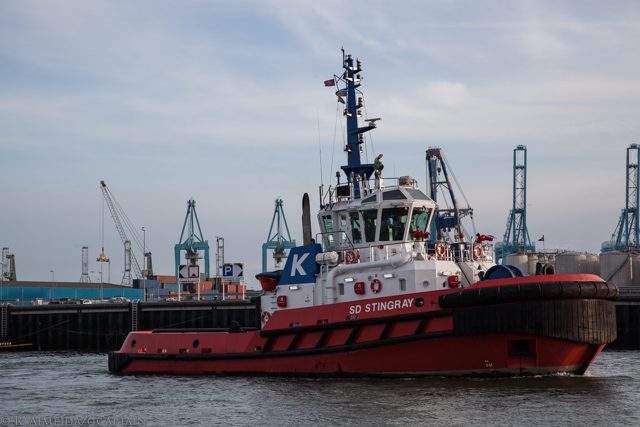
K-Line and USAC containerships unload boxes
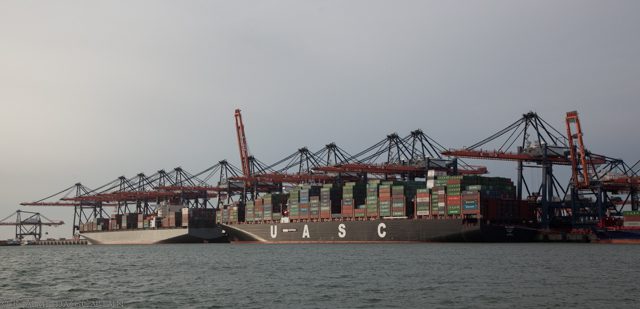
Below: The 6,802 TEU containership Maersk Klaipeda calls at APM Terminals

Located in the inner harbor of Rotterdam at Schiedam, is Damen’s Ship Repair yard where Technip’s Global 1200 recently received upgrades as well as a new coat of paint.
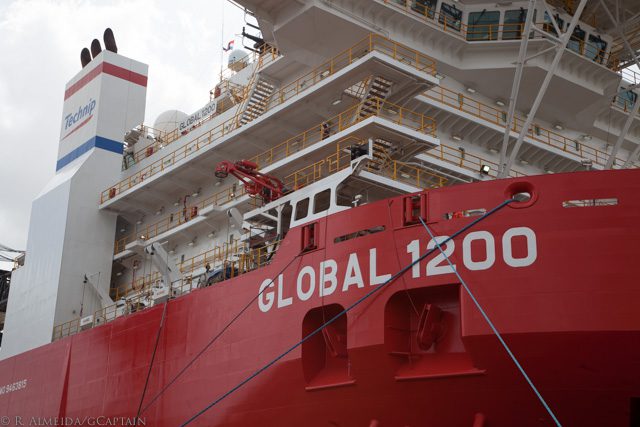
The Global 1200 has a really impressive 1200 ton rated mast crane.
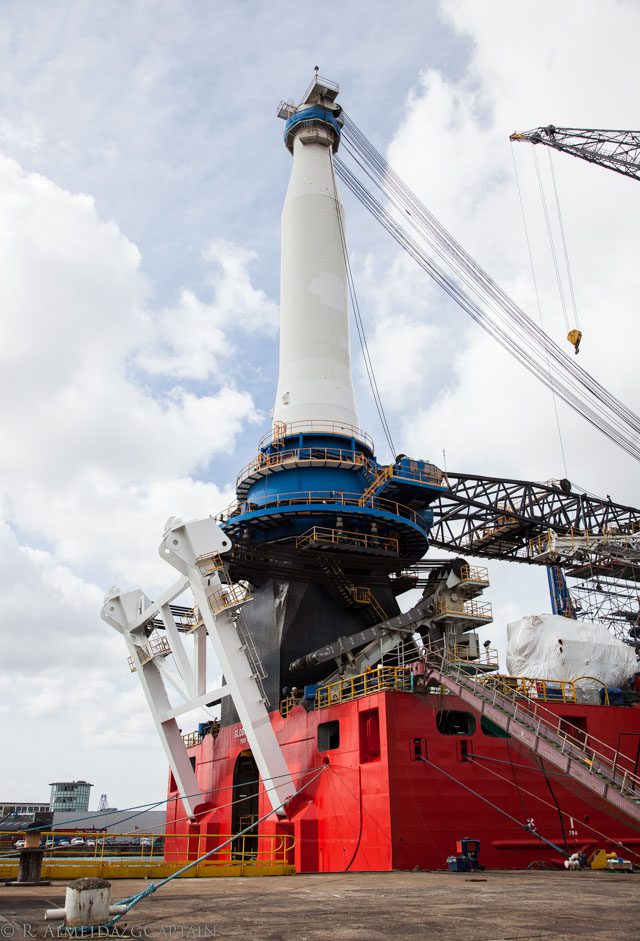
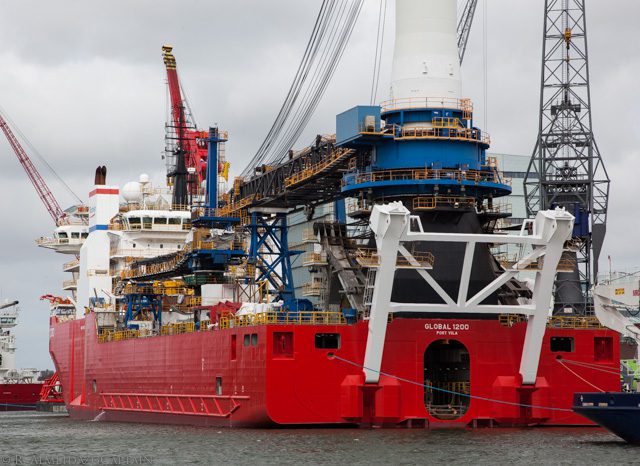
Damen Ship Repair (DSR) has 15 shipyards spanning 5 countries with a total of 40 dry docks, such as the one pictured below. Their largest, located in Brest, France is 420 meters by 80 meters and is ideal for cruise ships and large tankers such as LNG and crude carriers. DSR tackles upwards of 1500 projects per year

Rock dumping ships such as the Stornes are used to cover subsea pipelines after they have been laid on the sea floor. These vessels, by the nature of their work, require a significant amount of maintenance and are regular visitors to DSR.
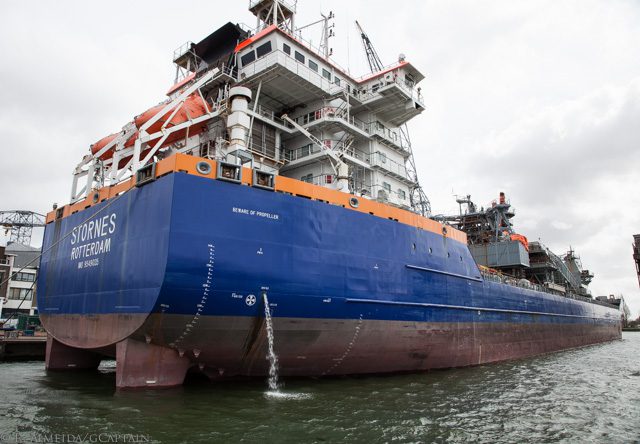
Last December, Teekay contracted DSR to upgrade its 1986-built FPSO Petrojarl 1 for a redeployment to the Atlanta field offshore Brazil where it will produce heavy crude oil in a water depth of 1535 meters. For DSR, the project includes marine, hull and life extension works according to Class, as well as conversion of the process systems (i.e. separation train and produced water topsides) and integration.
For DSR, this is a unique project as it involves significant topsides work, an area that they have just recently ventured into via partnerships with Dutch companies Frames and Nevesbu. Frames is carrying out the design and fabrication of the new ‘Topside Skids’ and Nevesbu will carry out the Marine, and Topside Integration Engineering.
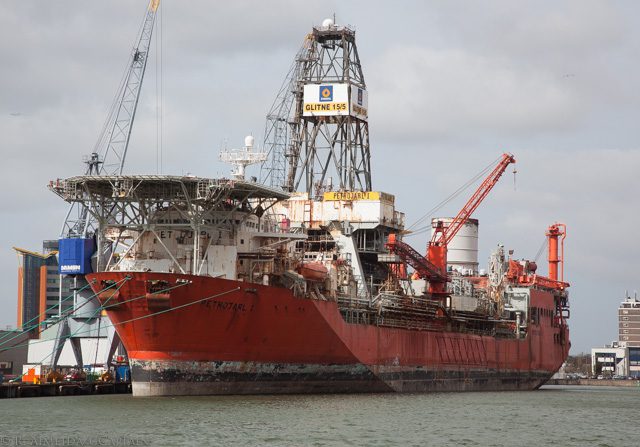

Further down the quay is Huisman, a company that designs and builds giant hydraulic cranes and pipelay systems for subsea construction work.
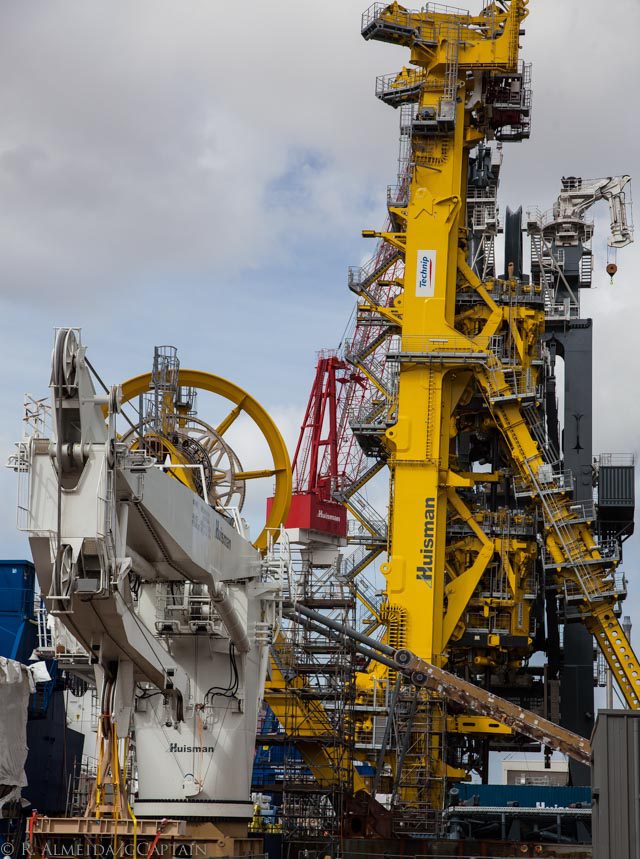
As an American, perhaps the most important thing that struck me is how much potential the U.S. has with regard to it’s industrial growth in the maritime and offshore sector.
Clearly, the Port of Rotterdam is visually impressive because all of their infrastructure is in one place, the U.S. could trump that easily if it put all its ports together, but the U.S. doesn’t have nearly the strength within its maritime sector like the Dutch.
1,082 ships fly the Dutch flag and the country’s order book for shipbuilding stood over 4.6 billion euro in 2014. The corresponding numbers in the U.S.are a tiny fraction of that.
The U.S. maritime administration is currently making progress on the development of its maritime strategy, we can only hope they have taken notes from the Dutch.

 Join The Club
Join The Club



























